Tectonic Plate
Tectonic plates are large pieces of the Earth's lithosphere that move and interact with each other. The lithosphere is the outermost layer of the Earth and is composed of the crust and upper mantle. The movement of tectonic plates is responsible for many geological phenomena such as earthquakes, volcanic activity, and the formation of mountain ranges.
Types of Tectonic Plate Boundaries
There are three main types of tectonic plate boundaries:
- Divergent Boundaries: These occur where tectonic plates move away from each other. This movement can result in the formation of mid-ocean ridges and rift valleys.
- Convergent Boundaries: These occur where tectonic plates move towards each other. Depending on the type of plates involved, this can result in the formation of mountain ranges, volcanic arcs, or deep ocean trenches.
- Transform Boundaries: These occur where tectonic plates slide past each other horizontally. This movement can result in earthquakes.
Key Concepts to Understand
When studying tectonic plates, it's important to understand the following key concepts:
- Plate Tectonics: The theory of plate tectonics explains the movement of the Earth's lithosphere and the geological features that result from this movement.
- Subduction: This is the process where one tectonic plate is forced beneath another plate due to their convergence. Subduction zones are often associated with volcanic activity and earthquakes.
- Hotspots: These are areas where magma from the mantle plumes up through the Earth's crust, often creating volcanic islands or seamounts.
Study Guide
Here are some key points to focus on when studying tectonic plates:
- Describe the structure of the Earth's lithosphere and its composition.
- Identify and explain the three types of tectonic plate boundaries.
- Discuss the geological features associated with each type of plate boundary.
- Explain the theory of plate tectonics and its significance in understanding Earth's geological processes.
- Provide examples of real-world phenomena resulting from tectonic plate movement, such as specific earthquakes, volcanic eruptions, or mountain ranges.
Understanding tectonic plates is crucial for comprehending the dynamic nature of the Earth's geology and the impact it has on shaping the planet's surface.
[Tectonic Plate] Related Worksheets and Study Guides:
.◂Science Worksheets and Study Guides First Grade. Weather
Study Guide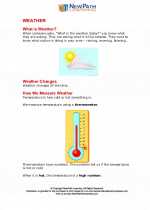 Weather
Weather  Activity Lesson
Activity Lesson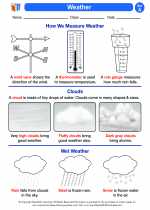 Weather
Weather  Worksheet/Answer key
Worksheet/Answer key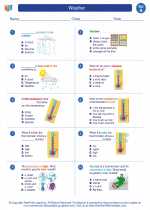 Weather
Weather  Worksheet/Answer key
Worksheet/Answer key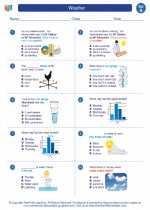 Weather
Weather  Worksheet/Answer key
Worksheet/Answer key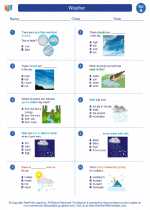 Weather
Weather  Worksheet/Answer key
Worksheet/Answer key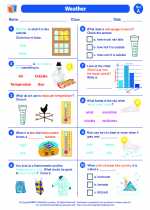 Weather
Weather  Vocabulary/Answer key
Vocabulary/Answer key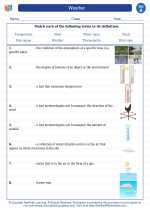 Weather
Weather  Vocabulary/Answer key
Vocabulary/Answer key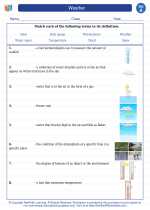 Weather
Weather 

 Activity Lesson
Activity Lesson
 Worksheet/Answer key
Worksheet/Answer key
 Worksheet/Answer key
Worksheet/Answer key
 Worksheet/Answer key
Worksheet/Answer key
 Worksheet/Answer key
Worksheet/Answer key
 Vocabulary/Answer key
Vocabulary/Answer key
 Vocabulary/Answer key
Vocabulary/Answer key

The resources above cover the following skills:
Earth Systems Science
Earth's materials can be compared and classified based on their properties. Students can:
Identify and represent similarities and differences such as the texture, size, color, and shape of various materials on Earth